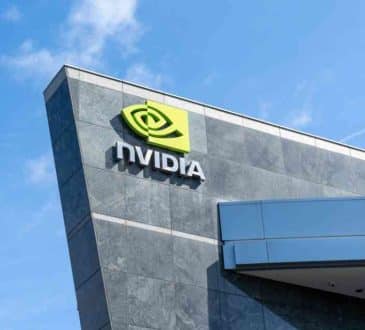How To Stay Ahead of the Bad Guys in Cybersecurity

Digital marketplaces have to stay one step ahead of cybercriminals. In a world where online fraud seems to be perpetually on the rise, maintaining a secure platform is not just a necessity but an art. Dorota Wróbel, Chief R&D Officer at G2A.COM, a leading global digital marketplace, shares her insights in an interview with me on this critical aspect of e-commerce, a world where the difference between success and disaster often hinges on the smallest of details.
The Art of Cyber Defense in E-commerce
The e-commerce landscape is akin to a turbulent sea where cybercriminals lurk like relentless sharks, eager to exploit even the tiniest openings. This environment demands not just vigilance but a mastery of digital defense tactics.
At the core of G2A’s strategy is a dynamic and responsive internal cyber defense team. This group of skilled professionals is engaged in a continuous process of enhancing and refining the platform’s cybersecurity solutions. These systems are designed to identify and respond to potential threats in real-time, learning and adapting from every interaction. This evolving intelligence is crucial in an arena where threats are constantly changing and becoming more sophisticated.
But G2A’s approach doesn’t stop with in-house solutions. Recognizing the complexity and scope of cybersecurity challenges, the platform collaborates with external partners who bring specialized tools and expertise to the table. These collaborations enable G2A to deploy a multi-layered defense strategy, combining their own advanced technologies with external innovations. This integration of internal and external resources ensures that every customer journey on the platform is safeguarded from start to finish.
The effectiveness of G2A’s cybersecurity measures is not just theoretical; the results speak for themselves. The platform’s fraud rate, which stands at a mere 0.39%, is remarkably lower than the industry average of 3.6%. This stark difference is a testament to the efficacy of G2A’s comprehensive and proactive approach to cyber defense.
Moreover, this success in cybersecurity is not merely about preventing financial losses; it’s about building trust. In the digital marketplace, consumer confidence is paramount, and G2A’s exceptional security record has become a key factor in establishing and maintaining that trust. Customers and sellers alike can engage with the platform knowing that their transactions are protected by some of the most advanced cybersecurity measures in the industry.
The Human Touch in AI-Driven Security
In the sophisticated cyber defense framework of G2A.COM, the interplay between AI and human expertise forms the cornerstone of their strategy. This synergy represents a forward-thinking approach to cybersecurity, where the strengths of both AI and human perception are leveraged to create an almost impregnable defense system.
AI in G2A’s security infrastructure serves as the first line of defense. These AI systems are equipped with state-of-the-art algorithms capable of analyzing vast amounts of data at incredible speeds. They are programmed to recognize patterns indicative of fraudulent activity, evolving with each transaction. This continuous adaptation ensures that the AI models stay abreast of the latest fraudulent tactics. However, AI, with all its prowess, is not infallible. It operates within the confines of its programming and data, potentially missing out on nuances that a human analyst might catch.
This is where the human element comes into play, adding depth and discernment to the cyber defense strategy. Wróbel and her team understand that human oversight is critical in interpreting the subtleties that AI might overlook. The human experts at G2A provide a crucial layer of analysis, scrutinizing AI-generated alerts for false positives and identifying complex fraud patterns that might escape purely algorithmic detection. This human intervention is particularly vital in handling sophisticated cyber threats that are designed to mimic legitimate user behavior, thereby evading AI detection.
Moreover, the human team contributes to the continuous improvement of AI models. Through their insights and experiences, they feed new information and parameters back into the AI systems, enhancing their accuracy and efficiency. This dynamic feedback loop ensures that both AI and human teams learn from each other, leading to a more robust and resilient security posture.
G2A’s approach of combining AI with human expertise also allows for rapid adaptation to the ever-evolving landscape of cyber threats. The cybercriminal world is marked by constant innovation, with fraudsters regularly developing new tactics to bypass security measures. The dual approach ensures that G2A stays one step ahead. While the AI models handle the bulk of data analysis and pattern recognition, the human team focuses on strategic responses, threat assessment, and the development of new defense mechanisms in response to emerging threats.
Educating the Public: A Pillar of Cybersecurity
In the rapidly expanding digital landscape of the post-pandemic era, the surge in internet usage has brought with it a significant influx of inexperienced users, often referred to as “digital newbies.” This demographic shift poses a unique challenge in terms of cybersecurity. Recognizing this, G2A.COM has strategically positioned education as a cornerstone of its cyber defense architecture.
G2A’s educational initiative is a multifaceted campaign designed to empower these new users with the knowledge and tools they need to safely navigate the online marketplace. This endeavor goes beyond mere protection; it’s about building a community of informed and vigilant digital citizens. By raising awareness about the risks and common tactics used in online fraud, G2A is equipping these users to be proactive in their own defense.
The campaign employs various methods to reach and educate its audience. It includes user-friendly guides and tutorials that cover the basics of safe online behavior, such as recognizing phishing attempts, understanding secure payment methods, and learning the importance of strong passwords. These resources are crafted to be accessible and easy to understand, ensuring that users of all levels of tech-savviness can benefit from them.
Interactive webinars and workshops are another critical component of this educational crusade. Here, experts from G2A and the broader cybersecurity community engage directly with users, offering insights into the latest trends in cyber threats and defense strategies. These sessions provide a platform for users to ask questions and learn from real-world scenarios, making the learning experience both engaging and practical.
Social media also plays a pivotal role in G2A’s educational outreach. By leveraging these platforms, G2A disseminates bite-sized, easily digestible cybersecurity tips and updates. This approach ensures that vital information reaches a broader audience, creating a constant stream of awareness about cyber safety.
Moreover, G2A’s educational campaign also targets specific vulnerabilities that new users might have. For example, they provide tailored advice for those engaging in online gaming or purchasing digital goods, areas that are particularly prone to scams and frauds. By addressing the specific concerns of these user groups, G2A enhances their ability to detect and avoid potential threats.
The impact of this educational initiative extends beyond individual user safety. By empowering users with knowledge and tools, G2A is effectively building a more secure ecosystem. Educated users are less likely to fall prey to scams, reducing the overall incidence of fraud on the platform. This not only protects individual users but also reinforces the marketplace’s integrity, making it a less attractive target for cybercriminals.
Battling Generative AI Frauds
The advent of generative AI has revolutionized various fields, but it has also given rise to new, more sophisticated forms of cybercrime. This technology, capable of creating realistic content and mimicking human behaviors, has become a tool in the arsenal of modern cybercriminals. They use it for advanced spear phishing attacks and other complex scams, posing a significant challenge to digital marketplaces like G2A.COM. G2A implements a multi-layered strategy to combat these emerging threats effectively.
One of the key elements in G2A’s defense against generative AI frauds is their comprehensive transaction analysis system. Every transaction on the platform undergoes meticulous scrutiny, where advanced algorithms and security protocols assess its legitimacy. This system is designed to detect anomalies or patterns that could indicate fraudulent activity. The sophistication of these analysis tools means that even subtle signs of AI-generated content or behavior can be identified, allowing G2A to intercept potential frauds before they affect users.
Collaboration is another critical aspect of G2A’s strategy. Understanding that the fight against cybercrime is a collective effort, G2A actively engages with the broader security community. This collaboration involves sharing insights, trends, and strategies with other experts in the field. By pooling knowledge and resources, G2A can stay abreast of the latest developments in generative AI frauds and adjust their defense mechanisms accordingly.
Monitoring the dark web is also a key part of G2A’s approach. The dark web is often where new cyber threats first emerge and where cybercriminals exchange tools and techniques. G2A’s security team keeps a vigilant eye on these underground networks, looking for patterns or mentions that could signal upcoming attacks or new scamming techniques. This proactive surveillance enables G2A to anticipate and prepare for threats before they materialize in the mainstream internet.
Penetration testing is another proactive measure employed by G2A. In these tests, ethical hackers attempt to breach the platform’s defenses, simulating the tactics that real-world cybercriminals might use. This exercise is invaluable in identifying vulnerabilities that might not be apparent in day-to-day operations. By regularly conducting these tests and rigorously analyzing the results, G2A ensures that their defenses are not just current but also prepared for future threats.
As generative AI technologies advance, so do the methods used by cybercriminals. G2A’s commitment to staying ahead of these trends is evident in their ongoing investment in research and development. They continuously refine their AI models, enhance their transaction analysis algorithms, and update their security protocols to counter the ever-evolving nature of AI-driven cyber threats.
The Role of Cognitive Biases in Battling Generative AI Frauds
In the context of combating generative AI frauds in the cybersecurity realm, cognitive biases play a crucial, often understated role. Two specific biases, the optimism bias and loss aversion, significantly impact how individuals and organizations perceive and respond to the threat of AI-driven cybercrime.
Optimism bias, the tendency to believe that we are less likely to experience negative events compared to others, can significantly impact the approach to cybersecurity. In the case of generative AI frauds, this bias might lead individuals or organizations to underestimate the sophistication and potential impact of these threats. For instance, a company might believe that their existing security measures are sufficient to ward off any AI-driven attacks, underestimating the rapid advancements in AI capabilities. This complacency can delay the adoption of necessary enhanced security measures, leaving systems vulnerable to novel and sophisticated AI-generated attacks. It’s crucial for organizations like G2A to recognize and counteract this bias by continually updating their understanding and response to emerging AI threats, ensuring that optimism does not lead to vulnerability.
On the other hand, loss aversion – the tendency to prefer avoiding losses to acquiring equivalent gains – plays a significant role in cybersecurity decision-making. In the realm of fighting generative AI frauds, this bias can manifest in an overemphasis on preventing immediate losses over investing in long-term security solutions. For instance, a company might focus more on implementing quick fixes to plug existing security gaps rather than developing comprehensive, forward-thinking strategies that could offer better protection in the long run. This short-term focus, driven by the fear of immediate losses, could lead to a piecemeal approach to cybersecurity, making systems more susceptible to sophisticated AI-driven attacks in the future. To counteract loss aversion, organizations need to adopt a balanced view that values long-term security planning and investment as much as immediate loss prevention.
Understanding and addressing these cognitive biases is crucial for organizations like G2A. By being aware of optimism bias, they can maintain a realistic assessment of their vulnerabilities and the evolving nature of AI threats. Simultaneously, by acknowledging loss aversion, they can develop comprehensive, proactive strategies that look beyond immediate threats to long-term security resilience.
The Future of Digital Marketplaces
Staying ahead of the bad guys in cybersecurity is a complex, ongoing battle. But with leaders like Wróbel at the helm, employing a blend of cutting-edge technology, human expertise, and proactive education, marketplaces like G2A.COM are not just surviving; they are thriving. G2A’s success in digital items and cybersecurity enables them to further expand in the US market. As we venture deeper into the digital age, this holistic approach to cybersecurity will be the beacon guiding businesses towards a secure and prosperous future.
Have you read?
Dirty Driving: These Are The Most Polluting Cars.
The 10 Female CEOs in FTSE 100 companies in the United Kingdom, 2023.
The 4 Most Influential Female CEOs In The Telecom Industry, 2023.
The 50 Richest People in the Philippines, 2023 List.
The World’s Richest Self-Made Women, 2023.
These Are the most overpaid CEOs among S&P 500 companies, 2023.
Add CEOWORLD magazine to your Google News feed.
Follow CEOWORLD magazine headlines on: Google News, LinkedIn, Twitter, and Facebook.
This report/news/ranking/statistics has been prepared only for general guidance on matters of interest and does not constitute professional advice. You should not act upon the information contained in this publication without obtaining specific professional advice. No representation or warranty (express or implied) is given as to the accuracy or completeness of the information contained in this publication, and, to the extent permitted by law, CEOWORLD magazine does not accept or assume any liability, responsibility or duty of care for any consequences of you or anyone else acting, or refraining to act, in reliance on the information contained in this publication or for any decision based on it.
Copyright 2024 The CEOWORLD magazine. All rights reserved. This material (and any extract from it) must not be copied, redistributed or placed on any website, without CEOWORLD magazine' prior written consent. For media queries, please contact: info@ceoworld.biz
SUBSCRIBE NEWSLETTER








